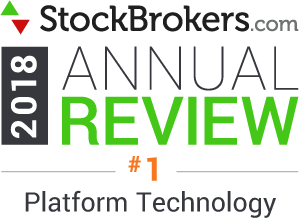
Modernizing a Fintech Pioneer: The TradeStation 10 Transformation
Breathing New Life Into Legacy Software While Preserving Its Soul
Leading a cross-functional team to revolutionize a platform that powers over 80% of company revenue
Overview
When you're tasked with modernizing software that traders have trusted for decades, you're not just updating code – you're reshaping the daily workflow of professionals who rely on your platform to make critical financial decisions. This was the challenge we faced with TradeStation, a pioneering trading platform that helped birth the fintech industry before the term existed.
Trading platforms are like high-performance cars – they need to be powerful enough for professionals while remaining accessible to everyday users. Our mission was to tune up this engine while keeping it running, upgrading everything from the dashboard to the drivetrain without ever leaving our users stranded.

The Problem
TradeStation's desktop platform, responsible for over 80% of commission revenue, was showing its age. While its core engine remained robust, the user interface and technical infrastructure needed significant modernization to meet contemporary standards and user expectations.
High-Level Solution
We embarked on a comprehensive platform transformation that touched every aspect of the software, from its visual design to its technical foundation, while preserving the powerful features that made TradeStation an industry leader.
The Challenge
TradeStation wasn't just any software – it was the original platform that revolutionized trading by allowing people to backtest their strategies before risking real money. Like a trusted vintage instrument, it had perfect pitch but needed modern amplification.
- Technical debt accumulated since the late 1980s
- User interface that reflected dated design paradigms
- Complex terminology that created learning barriers
- Infrastructure that didn't align with modern security practices
- Update processes that required manual intervention
Key Challenges
The Complexity Paradox
How do you simplify without sacrificing power?
The Continuity Challenge
Maintaining service for active traders during transformation
The Legacy Balance
Preserving valuable features while modernizing the foundation
The Learning Curve
Helping long-time users adapt to new interfaces and workflows

The Approach: The Double Lift Method
Like a magic trick that requires both visible flair and hidden technique, our approach operated on two distinct layers:
Visible Layer
Hidden Layer
Process
Discovery & Analysis
- Conducted user research across trader segments
- Mapped critical workflows and pain points
- Analyzed technical dependencies and risks
Strategic Planning
- Developed phased modernization roadmap
- Aligned cross-functional teams (Engineering, Design, Marketing, Sales, Service, Compliance, Legal)
- Created comprehensive transition strategy
Execution & Iteration
- Implemented changes in controlled phases
- Gathered continuous user feedback
- Adjusted approach based on real-world usage

Benefits & Results
Quantifiable Outcomes
- Streamlined platform maintenance with automatic updates
- Reduced support tickets related to UI confusion
- Improved user onboarding metrics
Key Achievements
- Successfully modernized platform while maintaining 24/7 trading capabilities
- Introduced TradeStation Today as a central trading hub
- Enhanced customization options for professional traders
Impact Metrics
- Maintained platform stability during transition
- Preserved critical revenue stream (80% of commission revenue)
- Positive user feedback on modernized interface
Key Learnings
Evolution Over Revolution
When modernizing mission-critical software, subtle, continuous improvement often outperforms dramatic overhauls. Like a ship being rebuilt at sea, you must keep the vessel afloat while replacing its parts.
The Power of Empathy
Understanding the muscle memory of long-time users is crucial. Every change, no matter how small, impacts someone's daily workflow. This insight guided our decision to maintain familiar patterns while introducing modern capabilities.
Technical Debt as Technical Investment
Legacy code isn't just a burden – it's a repository of battle-tested solutions. Our approach treated technical debt not as something to be eliminated, but as something to be refined and modernized, preserving the wisdom embedded in decades of development.
Cross-Functional Harmony
Success in platform modernization requires orchestrating multiple teams like a symphony. Each department plays its crucial part, and the leader's role is to ensure they create harmony rather than cacophony.